Join More Than 50,000+ Subscribers and get latest camera news and rumors
NEW CAMERA VIDEOS ON YOUTUBE
|
By admin, on January 21st, 2025
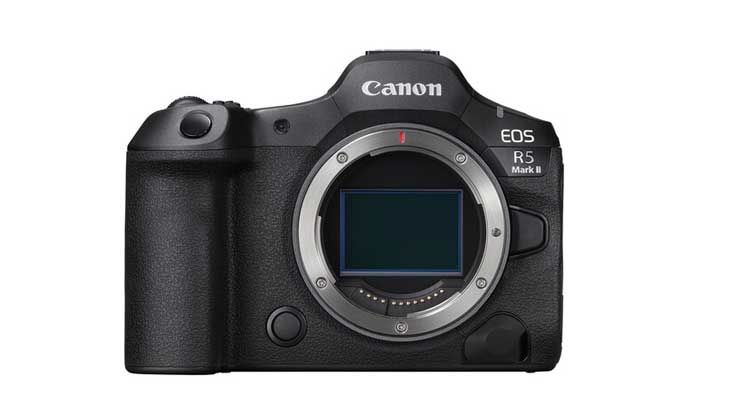
We are hearing a lot of rumors related to the upcoming Canon R5 Mark II firmware update, and the list of rumored features the camera will get is exciting.
- A 4K 60fps oversampled mode
- Open-gate Full-sensor recording video option very soon with the latest upcoming updates.
However, we are getting very different and unique information from a Chinese Weibo source, and according to him,
- the camera will have or enable an APS-C format full-resolution recording in a 17:9 RAW recording format. The maximum speed we will get in this particular mode is up to 120 frames per second in RAW mode / Clog.
I am excited to see all this information coming just before any official announcement about the R5 Mark II. So, let’s hope and expect some major advancements. As soon as Canon updates the firmware, we will post it on our website.
Also, see – Best Lenses For Canon R100 in 2025 | Canon RC Camera Coming? |
Also take a look at – Canon Upcoming Cameras 2025
Get LIVE RUMORS –> FACEBOOK | TWITTER | INSTAGRAM to get live news + Canon rumors 24X7
source – webio
By admin, on January 20th, 2025
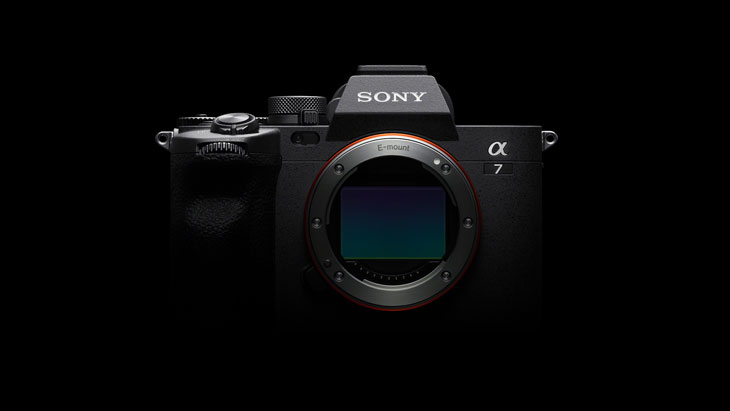
According to the latest, Sony will announce the FE 50-105 F2.8 lens at the end of February 2025. At the same time, Sony is highly likely to announce the Sony A7 V camera in March 2025.
We have gathered a lot of information about the Sony A7 V camera in the past [check all updates here Sony A7 V], and the latest set of details suggests that the camera may feature a 44-megapixel sensor. However, in the past webio (Chinese sources) suggested that there is also the possibility of a 33-megapixel stacked CMOS sensor. So, if we concentrate on all the information received over the past year, it creates two possibilities: either the camera will come with a 44 MP BSI CMOS sensor or a 33 MP stacked CMOS sensor.
Again, we are waiting for further confirmation. If received, we will post an update very soon.
Check out more
Wild Rumors: Sony FX30 II, Sony FX30 R and Sony ZV-E1 II Coming in 2025
Follow us on our social pages FACEBOOK | TWITTER | INSTAGRAM, If you have time –>see more Sony Alpha Rumor
source – SAR.com
By admin, on January 20th, 2025
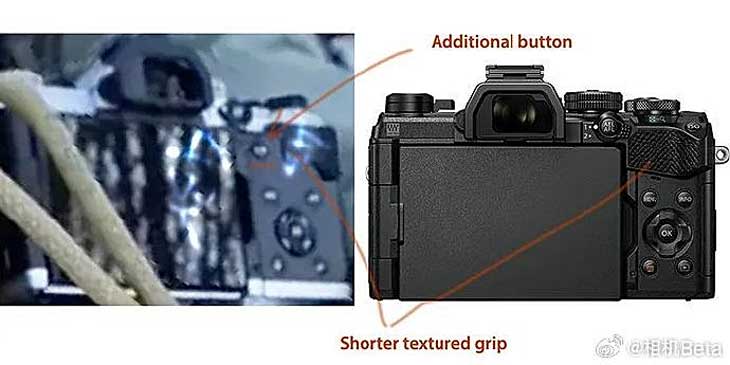 The image surfaced of the upcoming Olympus camera Olympus new camera announcement is about to happen in February 2025, we now have the leaked specifications of the upcoming cameras via a trusted rumor mill, the name of the camera is said to be OMD OM3, but the name of the upcoming camera isn’t been confirmed yet
Olympus OMD OM-3 Specification
– Same 20MP sensor
– Metal body
– Price around $1500
– Rumored to be officially announced at CP+ in February 2025
– Various color profiles for video, similar to Fujifilm’s simulations
– Based on the OM-1
Stay tuned we will post detailed specifications and images, as soon they become available to us
STAY WITH ON FACEBOOK | TWITTER | INSTAGRAM, to get live news + Olympus Rumors 24X7
source 43addict
By admin, on January 18th, 2025
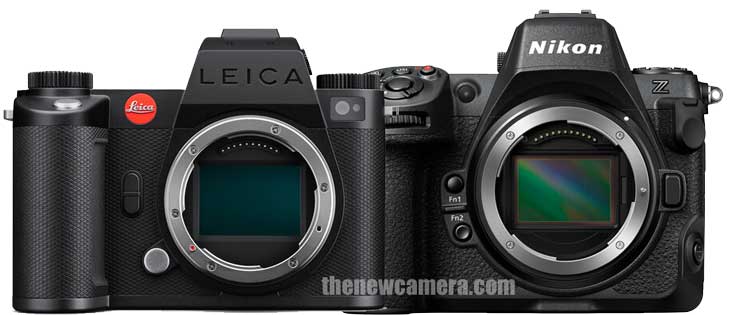
Nikon Z8 versus Leica SL-3 S: Which is the Best Camera Among These Two? If you are planning to buy the Leica SL3 S camera, you must first look at the Z8 core specification comparison table before making a decision.
Design Comparison
| Feature |
Nikon Z8 |
Leica SL3-S |
| Lens Mount |
Nikon Z |
L-Mount |
| Build Material |
Magnesium Alloy |
Aluminum, Magnesium Alloy |
| Dimensions (W x H x D) |
5.7 x 4.7 x 3.3″ (144 x 118.5 x 83 mm) |
Not Specified |
| Weight |
2.0 lb (910 g, with battery and recording media) |
4.715625 lb / 2139 g (With Battery)
1.7 lb / 768 g (Body Only) |
| Display Type |
3.2″ 4-Axis Tilting Touchscreen LCD, 2,100,000 dots |
3.2″ Tilting Touchscreen LCD, 2,332,800 dots |
| Viewfinder Type |
0.5″ OLED, 3,690,000 dots, Approx. 0.8x Magnification |
OLED, 5,760,000 dots, Approx. 0.76x Magnification |
| Eye Point |
23 mm |
21 mm |
| Weather Sealing |
Yes |
Yes |
| Wireless Connectivity |
Wi-Fi 5 (2.4 / 5 GHz), Bluetooth 5.0 |
2.4 GHz MIMO Wi-Fi, Bluetooth 5.0 |
| Dual Card Slots |
CFexpress Type B / XQD + SD (UHS-II) |
1x CFexpress Type B, 1x SD (UHS-II) |
| GPS |
Yes (via smartphone) |
Yes (via smartphone) |
Which camera is better for longer hours of work, like weddings and events lasting hours, the Leica SL3 S or Nikon Z8?
In the design comparison, it is visible that the Leica is built like a tank, heavier, but at the same time, the electronic viewfinder and the display part of the camera are of more premium quality. For more prolonged shooting, such as during weddings and events lasting over 7-8 hours or more, it’s recommended to hold a camera that makes you comfortable for longer hours of work, like the Nikon Z8.
Photography Comparison
| Feature |
Leica SL3-S |
Nikon Z8 |
| Sensor Resolution |
24.6 MP (Effective) |
45.7 MP (Effective) |
Sensor Tech
|
BSI CMOS |
STACKED BSI CMOS |
| Sensor Type |
Full-Frame |
Full-Frame |
| ISO Range |
100 to 200,000 (manual) |
64 to 25,600 (Extended: 32 to 102,400) |
| Continuous Shooting |
Up to 30 fps |
Up to 20 fps Raw, 30 fps JPEG Shooting |
Image Stabilization
|
Upto 5 – Stops (max) |
5.5 (Max 6 Stops with VR Lens) + AI IS |
| Autofocus Points |
779 Points (Phase + Contrast Detection) |
493 Points (Phase Detection Only) + AI AF tracking Modes |
| White Balance Options |
Auto, Cloudy, Color Temp, Daylight, Flash, Fluorescent, Manual |
Auto, Cloudy, Direct Sunlight, Flash, Fluorescent, Incandescent, Custom |
| Shutter Speed |
Mechanical: 1/8000 to 30 sec; Electronic: 1/16000 to 60 sec |
Electronic: 1/32000 to 30 sec; Bulb Mode Supported |
| Metering Modes |
Center-Weighted, Highlight Weighted, Multi-Zone, Spot |
Center-Weighted, Highlight Weighted, Matrix, Spot |
| Aspect Ratios |
3:2, 16:9, 17:9 |
1:1, 3:2, 16:9 |
| Image File Format |
DNG, JPEG |
JPEG, RAW |
| Bit Depth |
14-Bit |
14-Bit |
| Self-Timer |
2/5/10/20-Second Delay |
2/5/10/20-Second Delay |
| Built-In ND Filter |
No |
No |
| Capture Type |
Stills & Video |
Stills & Video |
In the photographic core specification comparison, the best part is the Nikon Z8 camera with its 45-megapixel BSI CMOS sensor. Along with that, the Nikon Z8 also features, AI Autofocus modes directly come from the Nikon Z9. The best part is in continuous shooting mode, Even at the full 45-megapixel resolution, you can capture 30 frames per second without any issues.
Leica is more of a bit retro and classical type camera, and it is limited to a traditional 24-megapixel BSI CMOS sensor that we have seen in the Panasonic S5 II. Although the number of autofocus points is much lower compared to the Nikon Z8, it doesn’t feature any AI autofocus tracking hardware that we have in the Z8. But again, if you are a Leica user, then you may prefer having a Leica camera, as Leica’s color science is quite different from Nikon’s.
If you compare the core specifications, without a doubt, the Nikon Z8 is a clear winner in the competition.
Video Comparison
| Feature |
Leica SL3-S |
Nikon Z8 |
| Max Resolution |
UHD 6K (5888 x 3312) |
UHD 8K (8256 x 4644) |
| Frame Rates (Max) |
4K at 60 fps [Crop] |
4K at 120 fps [Crop] |
4k 60 FPS
|
Yes, Cropped |
Uncropped |
| Slow Motion |
No |
Yes |
| Video Formats |
H.264, H.265 (4:2:0/4:2:2 8/10-Bit), ProRes 4:2:2 |
ProRes RAW HQ, H.265 4:2:2, H.264 4:2:0 |
| Internal Recording |
10-Bit 4:2:2 |
ProRes RAW HQ 12-Bit |
| External Recording |
4:2:2 12-Bit via HDMI |
12-Bit via HDMI |
| Audio Formats |
AAC, LPCM |
24-Bit LPCM |
| Gamma Curves |
Rec709, Rec2020 |
HDR-HLG |
| Recording Limit |
No |
No |
| IP Streaming |
No |
No |
| Built-In Microphone |
Stereo |
Stereo |
| Autofocus Points (Video) |
779 Points |
493 Points + AI AF modes Active |
| Heat Dissipation |
Passive |
Passive |
| Maximum Bitrate |
600 Mbps |
Up to 5780 Mbps (8K ProRes RAW) |
Which camera is better for professional photography use, the Nikon Z8 or the Leica SL3 S?
It’s very clear from the beginning of the comparison table that the Nikon Z8 camera is able to capture 8K videos and offers 4K video recording up to 120 frames per second. So, technically, the Nikon Z8 is quite a bit more advanced. At the same time, the Z8 camera also offers the ability to record high-quality 12-bit internal RAW video. Due to its nature and the very angle display screen, you can also create content with the camera if you like to follow platforms like YouTube.
Does the Leica SL3 S camera offer better video features compared to the Nikon Z8?
The Leica SL3 S camera does have a limited set of videography specifications and features, such as a tilting display screen on the back. However, if you have specific videography needs, the Nikon Z8 is superior.
Which camera offers more value for the price, the Nikon Z8 or the Leica SL3 S?
Among the two, as per the set of core specifications, the Nikon Z8 looks very promising and is more advanced compared to the Leica SL3 S for the price you’re paying. But if you are a Leica enthusiast and would love to buy a Leica camera, then you can still go with the Leica SL3 S if you wish to.
Here you can purchase online B&H Store | Adorama | Amazon.com |
By admin, on January 18th, 2025

The new Camera’s back image clearly shows that the button layout is similar to the OM-5, and there is one more button in the position of the dial. Current products do not have a similar design. The leaked image indicates that the new machine may be named OM-3 (not yet finalized).
STAY WITH ON FACEBOOK | TWITTER | INSTAGRAM, to get live news + Olympus Rumors 24X7
source webio
By admin, on January 17th, 2025
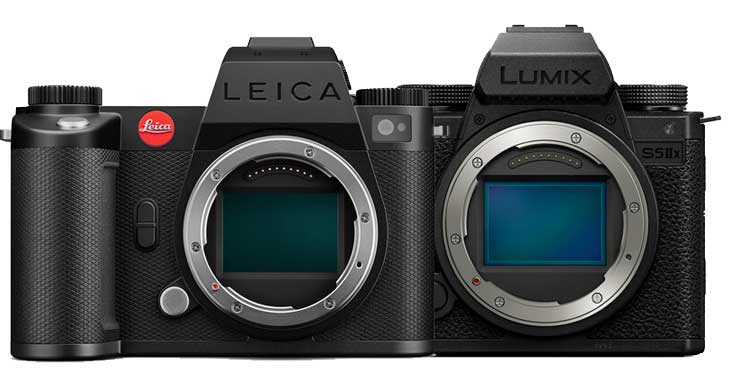
We are comparing the Leica SL3-S camera side by side with the Panasonic S5 IIX. Before we begin, I must tell you that there is a significant price difference between them. Starting with the design part. Next, we will move to the photography part, where we will compare the major core specifications that build up a camera’s character map. This will help photographers decide which camera to buy. In the final part of the comparison, in the third table, we have the video core specifications compared against each other.
Here you can purchase online B&H Store | Adorama | Amazon.com |
Get Panasonic S IIX DEAL at Amazon.com
1. Design Comparison
| Feature |
Leica SL3-S |
Panasonic S5IIx |
| Lens Mount |
L-Mount |
L-Mount |
| Build Material |
Aluminum, Magnesium Alloy |
Magnesium Alloy |
| Dimensions (W x H x D) |
Not specified |
5.29 x 4.03 x 3.55″ (13.44 x 10.24 x 9.02 cm) |
| Weight |
4.72 lb (2139 g) with battery |
1.64 lb (744 g) with recording media |
| Monitor Display |
3.2″ Tilting Touchscreen LCD, 2,332,800 dots |
3″ Free-Angle Tilting Touchscreen LCD, 1,840,000 dots |
| Viewfinder |
Built-In Electronic OLED, 5,760,000 dots, Approx. 0.76x magnification |
Built-In Electronic OLED, 3,680,000 dots, Approx. 0.78x magnification |
| Eye Point |
21 mm |
21 mm |
| Weather Sealing |
Yes |
Yes |
| Wireless Connectivity |
2.4 GHz MIMO Wi-Fi, Bluetooth 5.0 |
2.4 / 5 GHz Wi-Fi 5, Bluetooth 5.0 |
| GPS |
Yes (via connected smartphone) |
No |
| Dual Card Slots |
1x CFexpress Type B, 1x SD (UHS-II) |
Dual SD (UHS-II) |
Conclusion: So, from the design part, it’s very clear that Leica excels with its design. The most visible thing is the red logo and tank-like design that promises a very well-built quality camera. Besides that, we have a superior resolution electronic viewfinder with 5.7 million dots and a higher-resolution display screen. But again, there are some limitations in the display. It is tiltable but cannot be used for filming yourself. So, for content creators, the Leica SL3-S is not made for you.
The biggest difference you can spot, apart from all this, is that the Panasonic S5IIx camera features an active cooling mechanism with a built-in fan inside the camera. That’s why the camera can handle heat, whereas the Leica SL3-S has no active onboard cooling mechanism.
Now let’s compare the photographic core specifications of both cameras.
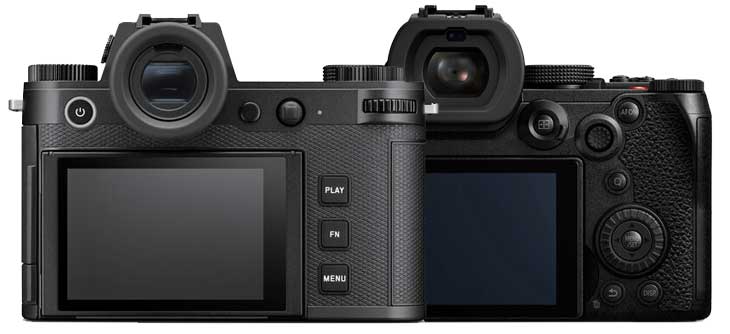
2. Photography Comparison
| Feature |
Leica SL3-S |
Panasonic S5IIx |
| Sensor Resolution |
24.6 MP effective (Full-Frame BSI CMOS) |
24.2 MP effective (Full-Frame CMOS) |
| ISO Range |
100 to 200,000 (Manual Mode) |
100 to 51,200 (Extended: 50 to 204,800) |
| Image Stabilization |
Sensor-Shift, 5-Axis |
Sensor-Shift, 5-Axis |
| Shutter Speed |
Mechanical: 1/8000 to 30 sec, Electronic: 1/16000 to 60 sec |
Mechanical: 1/8000 to 60 sec, Electronic: 1/8000 to 60 sec |
| Continuous Shooting |
Up to 30 fps [Latger Buffer] |
Up to 30 fps for 200 frames (JPEG/RAW) |
| Autofocus Points |
779 (Phase Detection and Contrast Detection) |
779 (Phase Detection and Contrast Detection) |
| Metering Modes |
Center-Weighted, Highlight Weighted, Multi-Zone, Spot |
Center-Weighted, Highlight Weighted, Multiple, Spot |
| Aspect Ratios |
3:2, 16:9, 17:9 |
1:1, 2:1, 3:2, 4:3, 16:9, 65:24 |
| Image Formats |
DNG, JPEG |
JPEG, RAW |
| Bit Depth |
14-Bit |
14-Bit |
| White Balance |
Auto, Cloudy, Color Temp, Daylight, Flash, Fluorescent (Cool/Warm), Manual, Shade, Tungsten |
AWB, Cloudy, Color Temp, Daylight, Flash, Incandescent, Shade, Custom (4 presets) |
Conclusion: In our table, we can see that there is a kind of negligible difference between these two. But if you consider the Leica body, the superior electronic viewfinder, the higher-resolution display screen, and budget doesn’t matter to you, then for sure, the Leica SL3-S is a great camera between the two. However, if you love to save $2,000, then the S5IIx is the best.
The alternatives of the Leica SL3-S camera
The best alternatives to the Leica SL3-S camera in this price range are the Nikon Z8 camera and the Canon R5. These are some of the best cameras available. Specification-wise, these are far better than the Leica SL3-S, and you have to pay almost a similar or a bit less price compared to the two.
3. Video Comparison
| Feature |
Leica SL3-S |
Panasonic S5IIx |
| Max Resolution |
UHD 6K (5888 x 3312) at 23.98/25/29.97 fps |
5.9K (5952 x 3968) at 23.98/24.00/25/29.97 fps |
| Video Formats |
H.264/H.265 Long GOP, MP4 (4:2:0 8/10-Bit), ProRes 4:2:2 |
H.264/H.265, MOV/MP4, ProRes 4:2:2/4:2:0 8/10-Bit |
| External Recording |
4:2:2 12-Bit via HDMI |
4:2:212-Bit via HDMI |
| Frame Rates |
Up to UHD 4K (3840 x 2160) at 59.94 fps |
Up to UHD 4K (3840 x 2160) at 59.94 fps |
| Slow Motion |
Slow Motion Only |
Yes |
| Gamma Curve |
Rec709, Rec2020 |
Panasonic V-Gamut, V-Log |
| Built-In Microphone |
Stereo |
Stereo |
| Audio Formats |
AAC, LPCM |
MOV: LPCM 24-Bit, MP4: AAC 16-Bit |
| Recording Limit |
No |
No |
| IP Streaming |
No |
RTP, RTSP (up to 4K at 25 Mb/s) |
| Bitrate |
Not specified |
Up to 800 Mbps |
| Heat Management |
Not specified |
Active Cooling |
| Autofocus in Video |
Phase Detection |
Phase Detection with AI Tracking |
| HDMI Port |
Full-Size HDMI |
Full-Size HDMI 2.1 |
| Timecode Support |
No |
Yes |
| Vertical Video Support |
Yes |
Yes |
Conclusion: Both cameras offer 6k at 30fps, 4k 30FPS uncropped and 4k60fps with crop [1.5x]. Again, in the video core specification part, you can see there is very little difference to spot. Other than that, I prefer the Panasonic S5 series camera’s V-Log. At the same time, we also have an active cooling mechanism that prevents it from overheating. So, more or less, for video core specification-wise, the Panasonic S5IIx camera is more recommended.
Also see – Sony FX30 vs Panasonic S5 IIX
By admin, on January 16th, 2025
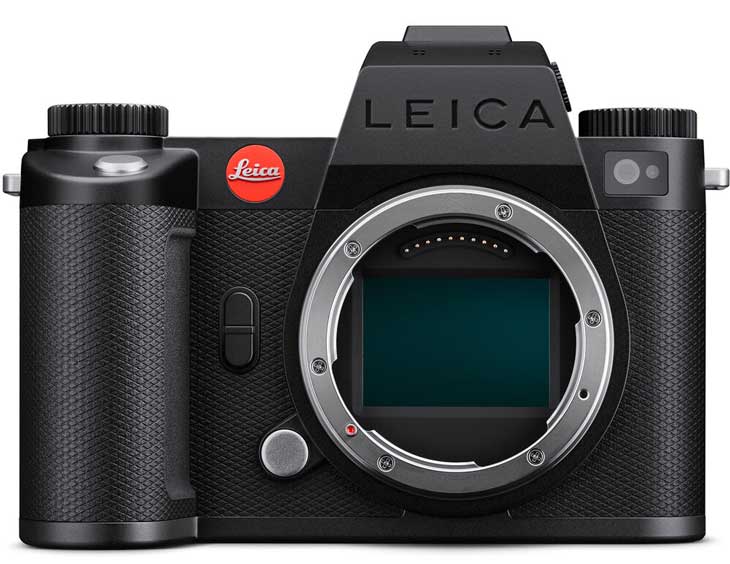
Leica today announced the Leica SL3-S Camera, according to Leica, it is one of their fastest cameras to date. The camera uses the same 24-megapixel full-frame BSI CMOS sensor that we have seen in the Panasonic S5 II and S5 II X cameras. At the very same time, the continuous speed of the camera MAXED out upto 30fps, take a looka the major core specification of the camera and its press release
Key Specifications
- 24MP BSI CMOS full-frame sensor with on-sensor phase detection
- Up to 30fps shooting
- IP54 weather sealed body
- 96MP Multi-shot high res mode
- 6K full-sensor ‘open gate’ video up to 30p
- Full-width 4K video up to 30p, 60p with APS-C crop
- ProRes 422 HQ internal capture, output to SSD and Raw over HDMI
- ‘Camera-to-cloud’ compatibilitay with Frame.io collaboration platform
- CAI Content Credentials authenticity metadata
Where to Purchase The Leica SL3-S
Here you can purchase online B&H Store | Adorama | Amazon.com |
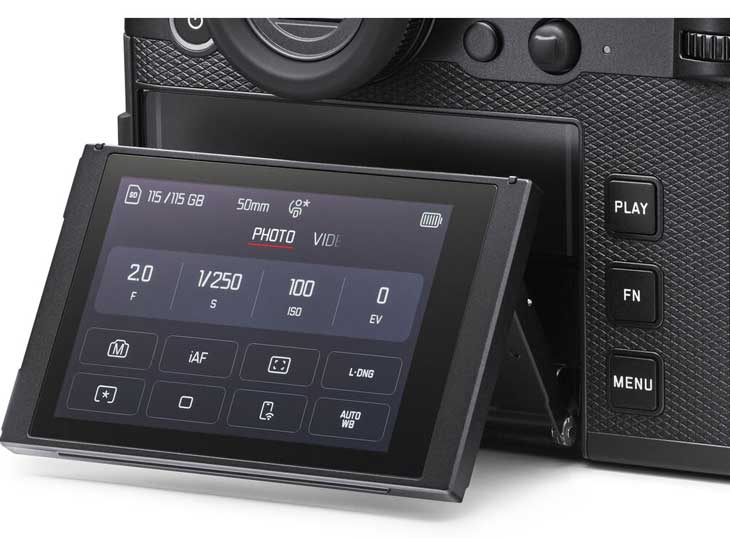
Leica SL3-S Press Release
The new full-frame system camera with a 24 megapixel sensor, fast autofocus and enhanced video functions is now available.
Teaneck, January 16th, 2025. Leica Camera AG launched the SL-System in 2015, seamlessly blending photography and videography in a unique way right from the very start. With this full-frame system based on the L-Mount standard, Leica firmly established itself in the world of professional audiovisual production. The latest version of SL-System cameras is the Leica SL3, which was launched in March 2024. As with all Leica products, it fulfils the highest standards of image and production quality, setting new benchmarks for ease of use with its unique user interface. These values are now embodied in a new SL-System camera: the Leica SL3-S.
When developing the Leica SL3-S, Leica focused on the high demands of professional photography and videography. In doing so, the brand prioritized speed, flexibility and versatility. The result is a camera that combines the highest image quality for both photography and videography with optimum working speed and reliability. The Leica SL3-S integrates state-of-the-art technology into an outstanding design. It also offers numerous new functions that ensure a professional workflow for producing audiovisual content.
A new BSI CMOS full-frame sensor with 24-megapixel native resolution, 48- and 96-megapixel multi- shot modes, and a new autofocus system form the core of the Leica SL3-S. Securely protected by an IP54-certified solid all-metal body, Leica combines the strengths of three focus technologies here: the latest generation in phase detection AF (PDAF), depth map (object detection AF) and contrast detection AF enable continuous shooting with the Leica SL3-S at up to 30 frames per second with full autofocus support. This makes the SL3-S the fastest Leica system camera ever built. Together with a high dynamic range and the impressive ISO range of 50 to 200,000, the SL3-S delivers excellent- quality photos and videos in all shooting situations.
The Leica SL3-S is also the first camera in the SL-System to be equipped with content credentials technology in accordance with the Content Authenticity Initiative (CAI) for photos. If desired, each image can be signed with tamper-proof metadata, such as the camera model and author information, as well as creation and editing data. In order to prove authenticity with verifiable image content and to make edits transparent, the content credentials can be checked using freely available verification tools (verify.contentauthenticity.org).
The Leica SL3-S records videos in a resolution of up to 6K and offers 3:2 open-gate recording, a feature that provides flexibility when creating video content for a wide variety of channels. For example, portrait format videos can be recorded in 4K, 9:16 without any loss of quality and the field of view in recorded material can also be determined retrospectively. The Leica SL3-S records HDMI- RAW in 5.9K at 30 fps to external display recorders. What’s more, thanks to the fast CFexpress type B interface, ProRes 4:2:2 HQ in 5.8K at 30 fps or C4K at 60 fps can also be internally recorded without any recording time limits. It is also possible to record directly to an external SSD hard drive via the USB-C interface, which further increases the flexibility of the Leica SL3-S. A dedicated timecode interface enables professional synchronization of image and sound on set. The Maestro IV processor with L2 technology effortlessly handles enormous amounts of data, resulting in images with superb color rendering, high dynamic range and excellent noise behavior in the L-Log color space. This processor has been lauded internationally for its optimal quality.
The versatile interfaces and powerful connectivity of the SL3-S ensure a seamless professional workflow. It has slots for CFexpress type B and UHS-II SD memory cards, a USB-C port for fast data transfer, tethering, SSD connection or power supply, and a full-size HDMI 2.1 output for external LCD panels or recording devices. In addition, Bluetooth and Wi-Fi with MIMO technology enable fast, stable connection to the Leica FOTOS App, with which DNG images can be transferred in full resolution in a matter of seconds. As a certified Apple “Made for iPhone® and iPad®” accessory, the Leica SL3-S can be connected directly to Apple products using the supplied USB-C cable. Over the course of 2025, the Camera-to-Cloud function will also become available via Adobe frame.io, using which videos and photos can be uploaded directly from the camera to the Adobe frame.io cloud for further processing.
Thanks to the L-Mount, the Leica SL3-S can be combined with the outstanding lenses for all Leica camera systems, as well as the broad range from super wide-angle lenses to super telephoto zoom lenses from the L-Mount alliance partners. Various Cine lenses can also be used via adapters, the special scales for which can be found in the video menu of the Leica SL3-S. The lens bayonet mount ensures that the Leica SL3-S offers comprehensive system compatibility. In addition, the legendary Leica M-Lenses’ full potential can be harnessed thanks to the special design of the image sensor and an external light sensor. Photographers and videographers benefit from the unrivalled imaging performance and compact design of the Leica M-Lenses together with the incredible features of the SL3-S. Image stabilization of up to 5 stops integrated into the camera body further extends the range of applications for M-Lenses.
The EyeRes® viewfinder of the Leica SL3-S is equipped with a painstakingly produced optical system of glass lenses. It displays the subject crystal clear at all times with up to 120 images per second and a resolution of 5.76 million pixels. Thanks to the live preview, it offers full control over the exposure and composition of shots even before the shutter is released. Another new feature of the SL3-S is the tilting 3.2-inch high-res touchscreen with a high-quality tilting mechanism, which makes it even easier to take photos and videos from different angles.
A further highlight is the interface, already familiar to users of the SL3. As with the SL3, the optimizations to the SL3-S include ergonomic and haptic features, as well as the user interface and menu navigation. The structured icon and menu design makes navigation even easier, with distinct sections for photo and video functions. The Cine mode has been tailored specifically to professional video production needs.
Freely assignable FN buttons and optimized touch interaction throughout the camera menu allow intuitive and convenient operation. When taking photos and filming, the entire user interface of the SL3-S aligns itself in landscape or portrait format according to the camera position. The SL3-S is noticeably lighter and more compact than its predecessors and feels even better in the hand thanks to its optimized design. In addition, the complete range of accessories already available for the Leica SL3 are also compatible with the SL3-S.
The Leica SL3-S is now available worldwide in all Leica Stores, in the Leica Online Store and from specialized dealers. The retail price is $5,295.
All information about the new Leica SL3-S can be found at: leica-camera.com/sl3-s
Follow us on our social pages FACEBOOK | TWITTER | INSTAGRAM, get live news + Leica rumors 24X7 165
|
KEEP THIS BLOG ALIVE - Support New Camera Buy Canon Lenses, Buy Music CD or Digital Camera at amazon it helps this site, and you do not pay anything extra, it is just a way to help support this site.

|













